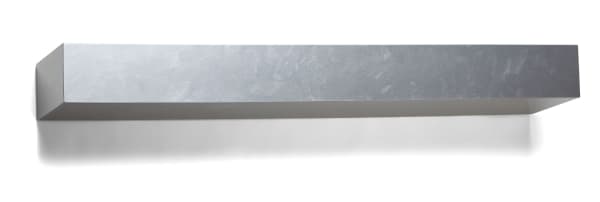John McCracken 1936-2011
Please contact the gallery for other works available by this artist.
John McCracken is an American artist known for his minimalistic pigmented-resin sculptures. McCracken studied at the California College of Arts and Crafts in Oakland. While in graduate school, he worked with three-dimensional canvases and used industrial materials as plywood, sprayed lacquer and pigmented resin to make the surface highly reflective. This technique was popular on the surfaces of surfboards, which was a large part of the local southern California culture.
McCracken also drew influence from other minimalist artists as Donald Judd, Dan Flavin, Carl Andre, in addition to Abstract Expressionist Barnett Newman. Like other minimalists, McCracken experimented with simple shapes as squares, bars, pyramids and planks. He saw his plank series as "existing between two worlds, the floor representing the physical world of standing objects, trees, buildings, human bodies, ... and the wall representing the world of the imagination, illusionist painting space, human mental space…" McCracken's bold use of color and form confronts the viewer with a presence of solidity and power.
McCracken's work is featured in numerous permanent collections, including the Whitney Museum of American Art in New York, the Solomon R. Guggenheim Museum in New York, the MoMA in New York, the French National Art Collection, the Art Gallery of Ontario, the Art Institute of Chicago, the Milwaukee Art Museum, the Smithsonian American Art Museum in Washington D.C., the Rhode Island School of Design Museum, the Honolulu Museum of Art, the Santa Barbara Museum of Art, Oakland Museum and the LACMA.
Related Categories: Light and Space Movement, Minimalism, Linear Forms, Art of the 1960s, Abstract Sculpture, Post-War American Art, California Art, Line, Form and Color, Sculpture, United States.



